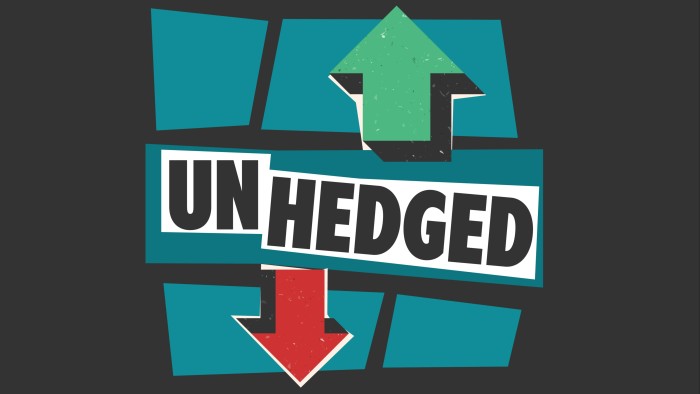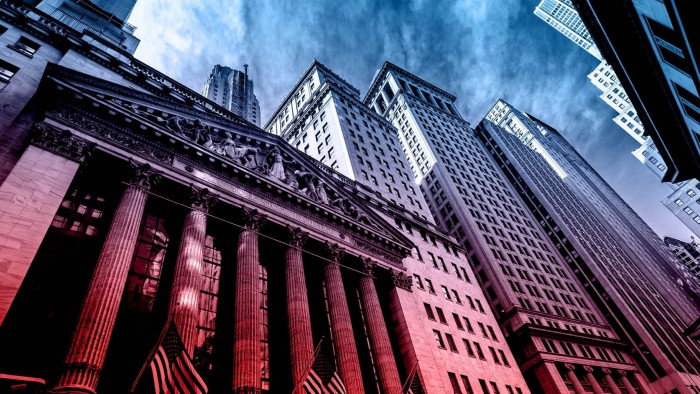Good morning, it’s Jenn here standing in for the holidaying Unhedged Two.
The S&P 500 got it together for another record high, with an assist from Intel’s dealmaking rumours. Intel roared 16 per cent higher on Tuesday following a weekend story from The Wall Street Journal that fellow chipmakers Broadcom and TSMC were considering a deal to pick it apart. I’ll leave it to Rob and Aiden to dive into Intel if they choose, but one chart to start, to . . . paraphrase our colleagues on the Due Diligence newsletter:
Intel is currently the best performer in the Philadelphia Semiconductor index this year, but its weak long-term performance, as per this chart, underlines why this one story generated so much interest.
Tell me or the Unhedged crew if you think otherwise: jennifer.hughes@ft.com or unhedged@ft.com
Oh, to IPO
Last week saw yet another disappointing initial public offering. Software group SailPoint raised the price range for its shares and upsized its deal to take in $1.4bn, citing strong demand — only to sink gently upon launch.
Last month, there was US LNG exporter Venture Global, which raised $1.8bn, but only after almost halving its price range. Its shares have fallen a third since. Days after that, pork producer Smithfield priced below its range to raise just over half the $940mn its top price would have produced.
Three uninspiring chunky deals before February is out is not the stuff to inspire IPO wannabes — nor to encourage investors that IPO investing is a must-grab bargain.
Cue more worries that the IPO market is broken. That’s been a regular refrain since the 2021 boom turned to well, not much at all. In the three years since, companies have raised less than half the record $154bn that they managed that year.
But is it really all that bad? Big guns seem to think so. Here are some recent comments:
First, Peng Zhou, chief executive of Citadel Securities, which many would love to see go public, in October, to Bloomberg TV:
“On the one hand find it easier to raise capital privately, and on the other hand, the negative side effects of being a public company, as a result of regulation . . . it’s giving people longer and longer pause. Until that changes, it probably also means the next time you ask me whether we’re going to IPO or not, the answer will continue to be no.”
Also in October, Jamie Dimon of JPMorgan, which ranked first globally for equity capital markets banking in 2024:
“Here in the United States, we’ve made it harder to go public. We’ve eliminated research on smaller companies, the costs are much higher, the litigation expenses are higher, filing with the SEC is higher. I think it would be really incumbent on us to make it easier and cheaper to go public.”
And last month in The Washington Post, Vlad Tenev, co-founder and chief executive of broker Robinhood, a beneficiary of the 2021 IPO boom, extolled tokenisation as an alternative to an IPO:
“The traditional IPO . . . has become so bloated and labour-intensive over the past two decades that only the largest companies can justify going public.”
Warning: Zhou hit on a key point I’m not going to discuss here, namely the pull of private capital. That’s talked about a lot, so I wanted to look at whether the IPO system was pushing companies away.
So here’s some data for perspective.

The pattern seems fairly clear. The IPO market repeatedly undergoes a cycle, differing in length, where the amount raised rises for several years, peaking in 1999 (dotcom bubble), 2007 (pre-financial crisis), 2014 (before 2015 Chinese market ructions rattled the world) and 2021. Then there’s a painful drop, followed by a gradual recovery.
Granted the collapse after 2021 was extreme, but then, so was the boom that preceded it: imagine if the $162bn that separately poured in to the floats of blank-cheque companies that year had also been pushed into IPOs?
Averaging out IPO proceeds since the aftermath of the 2008 financial crisis produces about $50bn a year — which is roughly where IPO bankers expect this year to end up. A market expanding by about 50 per cent from last year doesn’t exactly appear broken, either.
So why the complaints? All of the critics above mentioned regulation. Ask more at your peril, but the most oft-cited culprits are Sarbanes-Oxley and Dodd-Frank.
It has been more than 20 years since “Sox” was enacted. Boiled down, it demanded far more detailed financials and proof of internal controls. Dodd-Frank, in response to the 2008 crisis, was less extreme in its effects outside of the financial sector, but it did require more disclosures and policies around executive compensation.
Josh Bonnie, co-head of Simpson Thacher’s global capital markets practice, says it can all feel like a one-way ratchet:
“Then there’s whole avenues of exposure around policy issues like climate that never used to be a consideration. And if it’s so important that US companies address specific policy issues, why is it only the public ones that have to do it? There’s a lot to be said for being public, but for many people, it feels like you’ve just put yourself in the category that gets thwacked for a whole bunch of stuff, and that didn’t used to be the case.”
A lot of the evidence for regulation deterring would-be floats is anecdotal. Bankers and lawyers abound in stories of companies that explored US floats only to balk at the disclosures needed.
Disappointingly, few people seem to have looked for numbers — although a 2016 study did find the median 10-K had more than doubled in word length between 1996 and 2013. That sounds as likely to deter investors as IPO candidates.
Also, there was 2021: a year when all those rules applied and 397 companies — the most since the dotcom boom — still thought it worth taking the plunge. Call me a cynic, but there’s a strong asymmetry between high valuations and the number of broken IPO complaints.
Could the current frustration be less about rules and more that the stock market boom of the past two years and counting came at precisely the wrong moment for IPOs — that is, just as they began a multiyear recovery?

This chart has the same bars as before, so IPO value by year, with the line showing the S&P 500 performance. Beyond the basics that few companies float in down years and good IPO years are helped by a buoyant market, the chart suggests that strong stocks don’t necessarily beget more floats — 2019 being one example.
Rob Stowe, head of Barclays America’s equity capital markets team, says there’s a lot of investor interest.
“They definitely care and they’re focused. But there is still a degree of price sensitivity and caution . . . At the same time, there’s some reticence from companies because they see the last few years where there’s been light activity. We need to see more sustained activity, and more deals price and trade well, to give both sides confidence.”
Despite the soggy opening and barring a sudden market crash, I’m inclined to think the IPO market can continue its steady recovery without big rule changes. It just won’t be spectacular.
One good listen
Scam Inc podcast series by The Economist. The finances and alarmingly global reach of “pig butchering” laid bare.
FT Unhedged podcast

Can’t get enough of Unhedged? Listen to our new podcast, for a 15-minute dive into the latest markets news and financial headlines, twice a week. Catch up on past editions of the newsletter here.




